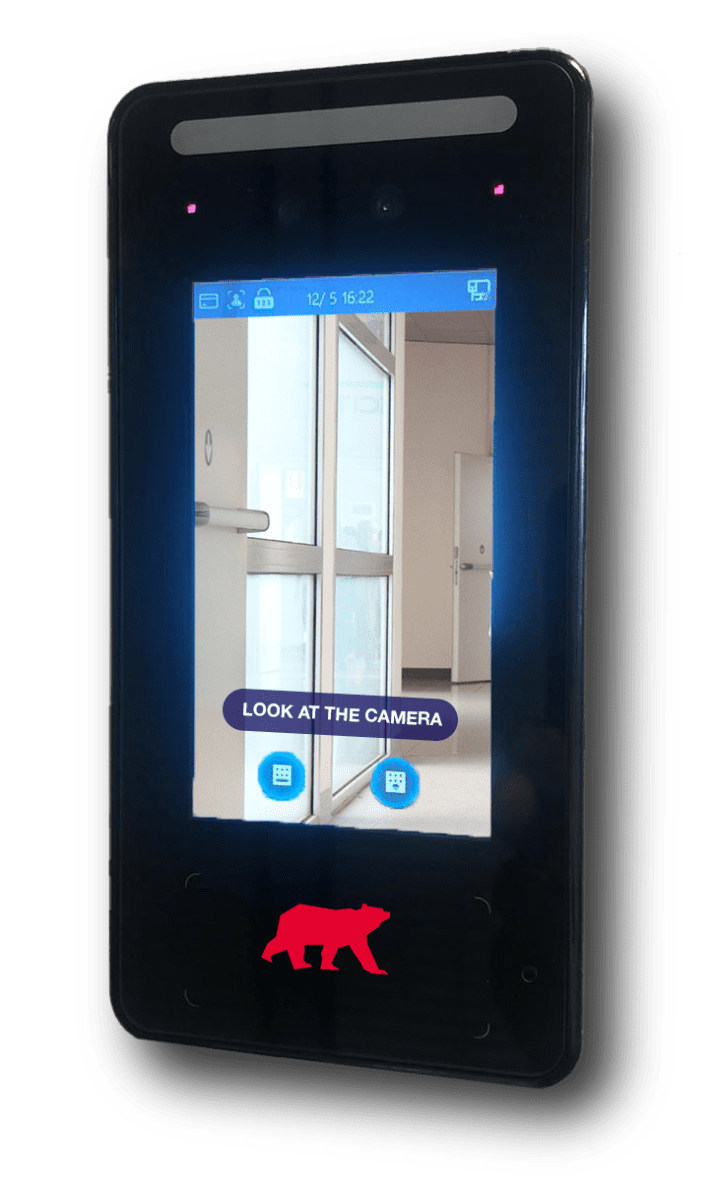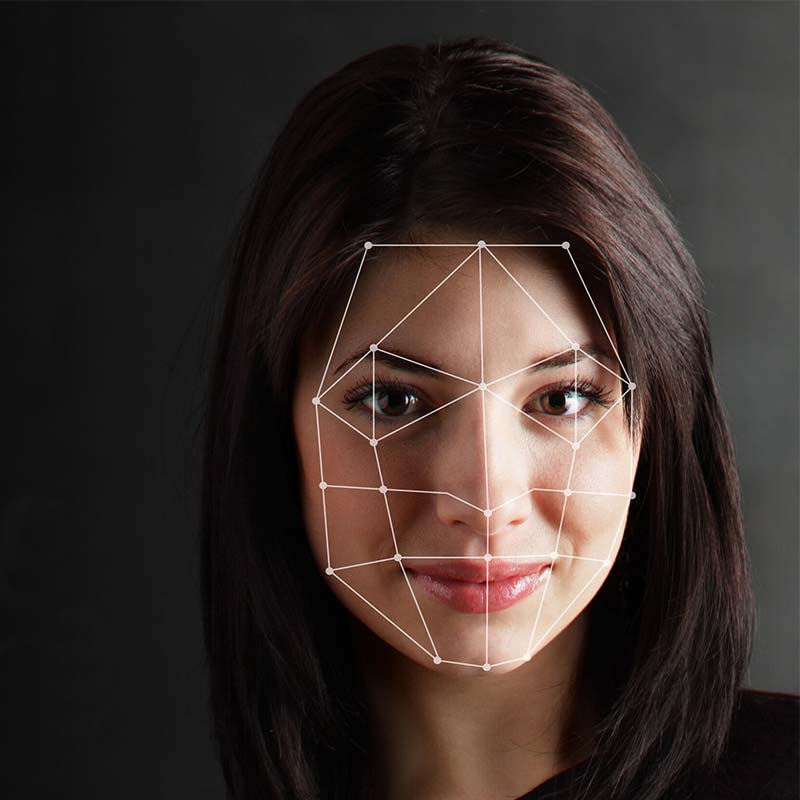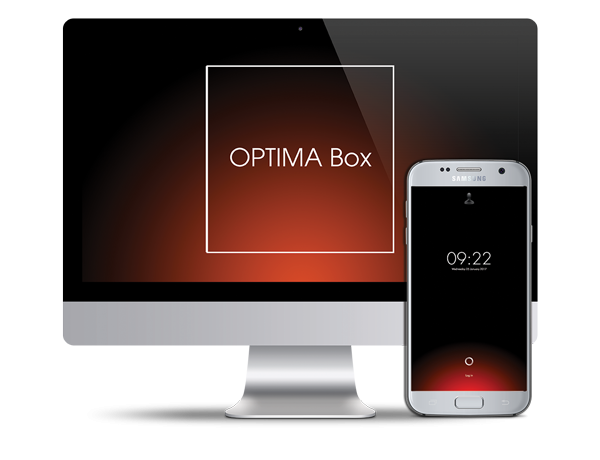
Safe Spaces, Happy Faces: How Employers Benefit When They Prioritise Workplace Security
Biometric readers deliver absolute proof of identity
Fast, Convenient Door Entry System
No more fumbling around for keys. cards or fobs. Remotely enrol or remove people from the system with just a couple of clicks in the software or from your mobile, ensuring that the database of authorised individuals is always up to date.
Identify is verified swiftly within 0.2 seconds.
Access is granted by using data that cannot be reproduced, stolen, or utilised by unauthorised parties. Highly accurate face scanners and AI prevent false positive identification. Anti-phishing technology settings prevent fraudsters attempting to use photos, fake masks and videos from gaining entry.
Guarantee that only authorised individuals can access your secure areas such as server rooms, high value stock storage areas, R&D, HR records storage or laboratories using face scanners.
Internal and external options for all weathers and locations with anti-vandal covers and built-in safeguards.
Upgrade to face scanners with temperature detection to prevent anyone with high temperatures from accessing the site. This capability is especially advisable for sectors dealing with potentially contaminated items, such as food. Temperature controlled environments are ideal for cold, covid and flu germs to linger and spread. Preventing infected and feverish individuals from the site can reduce the risk of mass staff downtime due to illness.
Biometric facial recognition readers are an effective touch-free access control solution that may be used in a building to verify that users are authorised before they enter controlled areas, buildings or departments.
Facial access control solutions are ideal for many sectors including construction, pharmaceutical, health and hospital, banking, and government. In recent years since mobile phone operators have adopted the technology to authorise operations on smartphones this technology is now the fastest growing mode of biometric access control.
Accuracy rate ≥99.5%. Supports liveness detection
Recognition Speed under 0.2 Seconds, Fast Recognition in Low-light Environments and Darkness
IP65 protection – Water and dust resistant
Face-camera distance – 0.3m-2.0m. Human height:0.9 m–2.4 m, The Equality Act compliant
Dual factor authentication – Optional dual factor authentication with MiFare cards/ fobs
Supports alarm output – Anti-passback, Tamper, Duress, Door sensor timeout, illegal intrusion
Dimensions – 396.9mm×185.6mm×77.2mm
Operating Temperature – -30°C to +60°C
Secure and seamless user experiences with biometric authentication
Onboard and offboard users easily
Fully mobilised software, suspend in seconds from your mobile, or pulse open doors when off-site
Manage access times by group: i.e. management, staff, contractors
Use with facial recognition, fingerprint, vein or RFID readers
Receive notifications of unauthorised access attempts
Improve efficiency and save time by integrating with your existing management software
Active directory synchronisation available
SSO (Single Sign On) for improved security or dual factor authentication option
Free software updates for the duration of your contract
We’ve been advising, installing and servicing facial access control for years within businesses from 5 to 50,000 employees
0
Solutions Installed
0
Countries
0
Employees
"Excellent support, latest technology, innovative. We have CCTV and Facial Recognition systems installed securing our premises to the highest standard. "
Read More"The fingerprint access control system, alarm, and remote CCTV monitoring have all made a significant difference. It's the ideal solution for our growing nursery. "
Read More"My staff all feel safe coming to and from the buildings especially in the Winter months."
Read More"This iconic bar caught the attention of none other than President Barack Obama and First Lady Michelle Obama during their visit to the area."
Read More"Time and attendance technology has improved the efficiency of our company so much."
Read More"When they came out to demo the 360 system, we knew that that system was the system that we wanted to utilise."
Read MoreWe’re passionate about creating an access control solution that’s tailored around your business. Our Security Consultants work with your specific needs and budget.
How does facial recognition work?
Facial recognition is a method of identifying or verifying a person’s identification by using their face. People can be identified using facial recognition algorithms in pictures, videos, or in real-time. It uses biometrics to map facial features from a photo or video and it compares the information with a database of known faces to find a match.
Facial recognition is a version of biometric security that aids in the verification of a person’s identification, such as with access control.
Face recognition systems work with a high level of safety and reliability requirements due to the application of artificial intelligence and machine learning technology.
Is facial recognition secure?
Facial recognition access control matches a face’s characteristics against a template in a database. That template must have been enrolled and authorised in the database first, then a matching process follows where identifying points are verified against the authorised template.
Can someone steal a photo of my face and use it?
The data is stored as a biometric template, rather than a picture of your face. All data is encrypted using 256bit encryption. Essentially a hacker would require 2256 different combinations to break a 256-bit encrypted message, which is a huge challenge even for the fastest computers. If they were trying to steal your identity, they would find it far, far easier to lift an image from your social media than to break into the database with your facial biometric template and backwards engineer it to a photo.
Is facial recognition GDPR compliant?
Any facial template that is created through companies using biometric access control is covered under the GDPR (General Data Protection Regulation). This means that the collection, storage, use and retention of the data must be carefully thought through. A PIA (privacy impact assessment) should be undertaken to ascertain whether it is a reasonable impingement of a person’s right to privacy.
Can we use facial recognition access control for children or vulnerable adults?
Yes, but under the GDPR there is a special category of ‘vulnerable data subjects’ and children or Individuals can be vulnerable where circumstances may restrict their ability to freely consent or object to the processing of their personal data, or to understand its implications. You must undertake a Data Protection Impact Assessment to help you identify and systematically analyse, identify and minimise the data protection risks of a project or plan. Ask us for further information.
What’s the difference between facial detection and facial recognition?
Facial detection merely identifies a face – with some CCTV camera systems the view can then zoom in to see the face in more detail. Facial recognition implies trying to identify whose face it is. Normally by comparison with a database. For private organisations, this database would consist of enrolled facial templates given when new users are added, with their consent, to a closed system. The data templates are encrypted and are not shared outside the system.
Who protects Data Privacy for citizens?
In the UK it’s the Information Commissioner’s Office (ICO); organisations that process data should be registered with them. If you’re unsure whether you should be there is a simple and effective self-assessment tool that you can use to check. For Ireland it’s the Data Protection Commissioner; you can find advice on their website.





